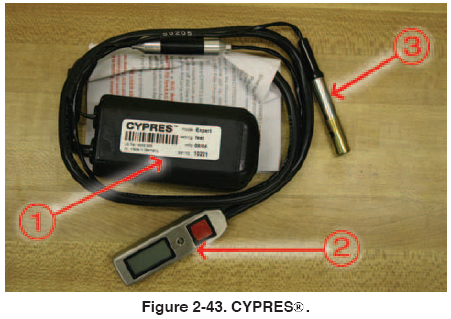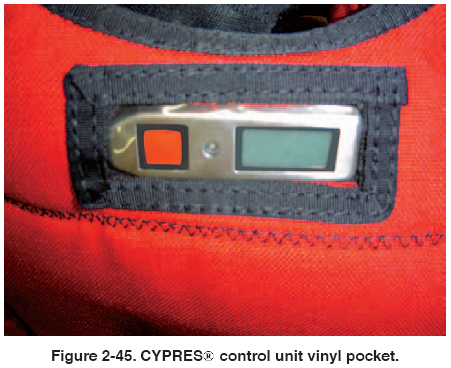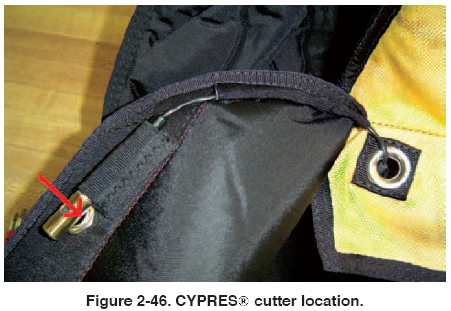Chapter 2
AUTOMATIC ACTIVATION DEVICES AND RESERVE STATIC LINES
Safety considerations have led to the development
of automatic activation devices and reserve static line
systems. These devices allow for automatic deployment
of the main or reserve parachutes in the event of
an emergency.
AUTOMATIC ACTIVATION DEVICES
Automatic activation devices (AADs) are devices which
activate the parachute automatically. Modern systems
combine a barometric sensor with a rate of descent sensor
so that the system is fully automatic once turned on and
calibrated. The activation may be by either pulling the
ripcord pin(s) or cutting the locking loop(s), causing the
pilot chute to release. Most older models use a mechanical
or pyrotechnic pin pulling technique. Newer models
use a pyrotechnic loop cutting design.
For many years, AADs were primarily used by the military
and student parachutists. The designs were bulky,
expensive, and, to a degree, inconsistent. The installations
themselves were cumbersome and awkward. In the early
1990s a new generation of AADs became available. The
CYbernetic Parachute RElease System (CYPRES®) uses
modern parachute release technology. It is small, reliable,
computer based, and uses a pyrotechnic loop cutter. It has
an auto-off feature that turns the unit off after 14 hours of
operation to conserve power. It also has the ability to calibrate
the unit for operation at altitudes other than the calibrating
ground level. Based on these concepts, other
companies have developed similar systems and as a
result, changed the approach to the design and use of
AADs. Today, most sport parachutists use an AAD and
some countries mandate their use by all parachutists.
The following describes the operation and installation
requirements of the CYPRES® model AAD. Most other
designs are compatible with the CYPRES® installation
requirements.
OPERATION
The CYPRES® system is a barometrically controlled
microprocessor that activates a pyrotechnic cutter that
cuts the container locking loop. When calibrated to
ground level, the barometric sensor activates the unit firing
the cutter when the descending parachutist reaches an altitude of approximately 750 feet AGL and exceeds a
rate of descent of 115 feet per second.

The CYPRES® consists of three parts: (1) the battery and
processing unit, (2) the control unit, and (3) the cutter.
[Figure 2-43] The processing unit is generally located in
a stowage pouch installed in the reserve container of the
parachute system. [Figure 2-44] The control unit is contained
in a vinyl pocket located either under the pin protector
flap or in the upper backpad area. [Figure 2-45]
 
The cutter(s) may be located at the base of the pilot chute
or on a flap over the pilot chute. [Figure 2-46] Each parachute
system has its own particular requirements, and it is
imperative that the rigger have the appropriate manuals
for installation.

| 
